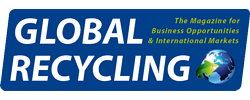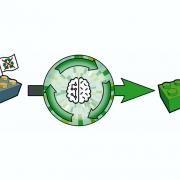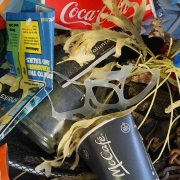Chinaplas 2025
The 37th International Exhibition on Plastics and Rubber Industries, Chinaplas 2025, will take place from April 15 to 18, 2025, at the Shenzhen World Exhibition & Convention Center (Bao’an).
According to the organizers, the People’s Republic of China – with a steadily expanding Purchasing Managers’ Index (PMI) and “confidence in meeting growth targets” – would solidify its position as a powerhouse in the global economy. “In November 2024, the PMI of China’s manufacturing industry reached 50.3 percent, an increase for three consecutive months, indicating an accelerating pace in the expansion of the manufacturing industry, according to the National Bureau of Statistics of China.” The plastic and rubber trade fair, themed “Transformation – Collaboration – Sustainability,” would host over 4,000 international exhibitors, with 380,000 square meters of space across all 19 halls, displaying the latest innovations in plastics and rubber solutions. Together with nine country/region pavilions, Chinaplas 2025 would facilitate collaboration along the upstream and downstream industry chains, “leading the way with green, smart and high-tech solutions to drive high-quality industrial growth.”
One key focus: circular economy
As described, the concept of a circular economy will continue to be one of the key focuses of the exhibition, highlighting the industry’s commitment to sustainability and resource efficiency. “By emphasizing the reuse of resources to minimize waste and stimulate economic growth, the exhibition will demonstrate a clear dedication to addressing environmental challenges. This focus aligns seamlessly with China’s progressive policies promoting sustainability and recycling initiatives, reflecting the industry’s proactive stance towards a more sustainable future,” the organizers underscored. Suppliers in the plastics and rubber industries were consistently unveiling biodegradable materials, recycling, and sustainable solutions as they actively propel efforts toward a circular economy.
At the trade fair, visitors will find three thematic zones on 16,000 square meters: Recycled Plastics, Bioplastics, and Recycling Technology. Furthermore, live demonstrations of two recycling production lines, focusing on “Bottle-to-Bottle Closed-Loop Recycling” and “Turning PE Waste into Treasure”, would unveil advanced equipment technology and high-value utilization solutions within the plastic recycling sector. “The sports and leisure industry, a promising market for plastics and rubber applications, will also be highlighted at Chinaplas with the ‘SportsTech Chic + Green’ event, collaborating with renowned sports brands to showcase the innovation and sustainability of plastics and rubber in sports products,” the information said. The exhibition and CPRJ (Adsale Plastics Network) will host the 6th Edition Plastics Recycling & Circular Economy Conference & Showcase in Shenzhen, gathering global stakeholders to delve into the latest recycling trends. “Collaborating with the China Packaging Federation, Chinaplas will first introduce the Sustainable Plastics Packaging Networking Forum, connecting industry experts and exploring sustainable packaging solutions worldwide.”
Examples for promising Asian markets
According to Chinaplas, Indonesia continues to pursue its 20-year development plan covering the period from 2005 to 2025, in which it will focus its last phase this year on improving human capital and enhancing its global competitiveness. “High private consumption and favorable foreign trade has been contributing to the growth of the country’s positive gross domestic product (GDP), which, according to the World Bank forecast, would average around 4.9 percent annually.”
Indonesia’s plastics market has also shown improvement, one can read on the exhibition’s homepage. With a market size estimated at seven million tons in 2024, it is expected to grow annually by 4.5 percent to reach 8.88 million tons by 2029, the authors referred to a corresponding report released by Mordor Intelligence. Increasing demand from end-user industries, such as packaging, automotive, electrical and electronics as well as construction industry, would heighten the demand for plastics. “The country also offers growth opportunities for producers of environmental friendly products as it intensifies its circular economy initiatives. While the country continues to rely on polyethylene (PE), polypropylene (PP), polyvinyl chloride (PVC), and polyethylene terephthalate (PET), other engineering plastics, as well as recycled materials such as recycled PET, are also gaining acceptance.”
Among the industries in Indonesia, packaging continues to benefit from the increase in personal consumption, which is partly driven by the increasing adoption of e-commerce. As plastics offer the ideal properties, including wear and tear resistance, chemical resistance, ease of processing, recyclability, and other mechanical properties, they have been the material of choice for a wide range of packaging applications. From 140.3 billion units in 2023, the country’s packaging industry is predicted to grow at a CAGR (compound annual growth rate) of more than three percent from 2023 to 2028, based on the projections by IMARC Group. “It also stated that consumers’ focus on recyclability, convenience and ease of use are pushing brands to improve their product packaging.” Flexible packaging would account for the highest share in the Indonesian packaging industry, with a growth rate at over five percent in the next few years.
As reported by Chinaplas, many innovations in the packaging industry are made to ensure the products align with circular economy goals. Several projects have been launched:
- Danone, in partnership with Prevented Ocean Plastic Southeast Asia, opened a new high-volume plastics collection center in Samarinda, Indonesia. The center is designed to process 500 tons of recycled plastics per month. AQUA, Danone’s bottled water, brand is a partner of the project who funds the construction of the center. The company commits to be the customer for the recycled plastics produced by the center.
- The ALBA Group is constructing a plastic waste recycling plant with a rPET production capacity of 36,000 tons in Central Java, that will require approximately 48,000 tons of PET bottle waste annually. The company PT ALBA Tridi Plastics Recycling Indonesia’s (AATPRI) is a joint venture between ALBA Group Asia and PT Tridi Oasis Group founder Dian Kurniawati. The PET bottles waste would be collected from the surrounding areas.
- Indorama Ventures Public Co., Ltd., a major player in the scene, has obtained 200 million US-Dollar loan from the International Finance Corporation (IFC) to expand its PET recycling capabilities in Indonesia, as well as Thailand and India. With the loan, the company will be able to expand its recycling facilities in Nakhon Pathom and Rayong in Thailand, to launch an automated plant in Karawang, Indonesia, and to construct new recycling plants in India.
“As Indonesia moves forward to increase its plastics recycling rate, the demand for recycling technologies will form parts of the overall strategy to achieve circular economy,” the organizers of the exhibition in Shenzhen underlined.
Just as interesting is Vietnam’s market. Estimated at 10.9 million tons in 2024, the country’s plastic market is projected to grow by a CAGR of 8.4 percent from 2024-2029, reaching 16.4 million tons by 2029, Adsale Exhibition Services Limited referred to a report by Mordor Intelligence. According to the information, the progression is attributed to the resumption of activities in end-user industries to pre-pandemic levels, with construction activities in industrial estates driving demand for plastics, alongside with stable demand from the F&B packaging, electronics/electrical, automotive, and medical and healthcare sectors.
Vietnam has also attracted the interest of foreign companies looking to diversify their operations and expand in the Southeast Asian region. As reported, the country’s Ministry of Planning and Investment gave account that investment inflows – with registered foreign direct investment amounting to 15.2 billion US-Dollar – had increased in the first six months of 2024 by 13 percent, compared to the same period in 2023. This figure was expected to reach 40 billion US-Dollar by the end of last year. “Industries receiving significant investments include semiconductor and electronics, construction, automotive, energy and consumer products. These investments are predicted to fuel activities in these sectors, thereby creating demand for plastics,” the information said. “Vietnam has also entered into bilateral and multilateral free trade agreements (FTAs), paving the way for reducing import tariffs and opening up new markets. These agreements have encouraged Vietnamese companies to explore the latest technologies to push their operations toward the global market.”
As stated by Adsale Exhibition Services Limited, there are more than 4,000 plastic product producers in Vietnam, according to the Vietnam Plastics Association, with around 90 percent being small and medium-sized enterprises. Regarding the manufacturing technology, extrusion technology is the dominant method for manufacturing plastics products to be used in the construction industry, while the fast-moving consumer goods industry will drive demand for injection molding and blow molding technologies. “The packaging sector, which accounts for the largest share of Vietnam’s plastics market, has seen substantial growth over the years as the demand for lightweight, convenient and safe packaging products continues to rise in the food and beverage, medical and healthcare and personal care products.”
Rising middle-class incomes, e-commerce growth and consumers’ growing awareness on environmental protection would be key factors influencing plastics utilization in Vietnam. Over the years, major investment inflows have positioned the country as one of the Southeast Asia’s fastest-rising manufacturing hubs. These investments would not only bring capital into the economy, but also facilitate the adoption of the latest technologies that would benefit Vietnam’s industrial sector.
The circular economy is also gaining momentum in Vietnam with many plastics companies encouraged to incorporate environmental-friendly practices into production of green products, Chinaplas informed. “Duy Tan Plastics Manufacturing Corporation, one of the top 10 packaging companies in Vietnam, is expanding its domestic and international markets through innovations, the adoption of digitalization, and embarking on the circular economy journey. Duy Tan specializes in various types of rigid packaging and caters to both local brands and multinational corporations. The company’s products are exported to 60 countries.” The manufacturer had relied on imported machinery to produce packaging that meets its diverse markets.
(Published in GLOBAL RECYCLING Magazine 1/2025, Page 23, Photos: Adsale Exhibition Services Ltd.)









